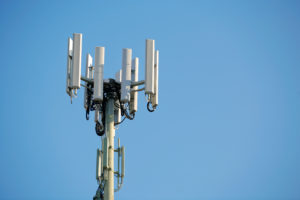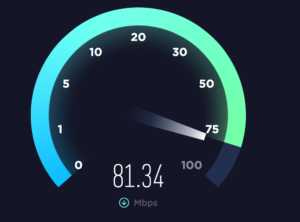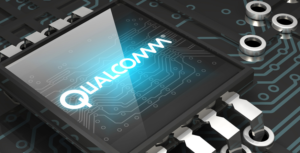
With new 5G technology, the frequencies are getting higher, which means distance the signal can make it from a cell tower is shorter. In order to cover the same area as 4G LTE with 5G… a microcell may be needed every 500′!

With new 5G technology, the frequencies are getting higher, which means distance the signal can make it from a cell tower is shorter. In order to cover the same area as 4G LTE with 5G… a microcell may be needed every 500′!

In a world where the new buzzword in cellular tech is 5G, Ford is adopting 4GLTE into all of its vehicles by 2020. This is going to allow over the air updates and mangement for vehicles, plus in car entertainment. Why no 5G? Well right now the first 5G deployments will be fixed site, not mobile, and mobile passenger vehicles don’t really need gigabit speeds anyhow.

According to a March 12, 2018 study by Accenture, U.S. wireless carriers spent $36 million in costs for National Historic Preservation Act (NHPA) and National Environmental Protection Act (NEPA) reviews for small cell deployment in 2017. Based on an estimated 3,700 small cells requiring review, this amounts to $9,730 per small cell in NHPA/NEPA review costs. These are just two reviews that are required for communications infrastructure deployment across the country.

Carriers have invested heavily in the R&D that will result in the launch of commercial 5G services as soon as later this year. Seeking ROI on those investments, the industry-wide goal is rapid commercialization with the first use case shaping up as enhanced mobile broadband with an eye on leveraging high capacity and low latency for consumer and enterprise services.

The US House just approved the ‘Repack Airwaves Yielding Better Access for Users of Modern Services Act.’ Though the name is long, in short this is going to open up new spectrum and funding for the deployment of 5G networks. Current cellular sites need to be placed every 1-2 miles apart, but 5G will need to have more sites closer together. This new act will let this happen.

As 5G draws ever closer, there is a clear leader and it is not who you would think. For as many press releases as the big carriers in the US have posted, its actually China who is leading the way. With major carriers all rapidly deploying 5G across the country, it looks like they’ll be the first nation to have a true gigabit experience.

Qualcomm, one of the biggest mobile chip makers in the world, is hoping 5G will be a big deal. Qualcomm has been producing 4G LTE chips, and 5G chips for some time now, with speeds up to 2Gbps. The problem will be with carrier adoption and the needs for such devices. With recent releases from all major carriers though, 5G is real and is coming quickly.

It seems like we’ve been discussing 5G for a few years, but this year real 5G deployments are coming. At this point the big 4 carriers have all released their 5G plans and it looks like Verizon may be the first to market, though not for the average consumer. Verizon will be deploying fixed site first and then moving to mobile devices later on.
:format(webp)/cdn.vox-cdn.com/uploads/chorus_image/image/58835451/5g_mwc_graphic_twitter_featured.0.jpg)
Sprint is trying to make a big comeback in the wireless world and has just announced its first six markets that will be 5G ready. Atlanta, Chicago, Dallas, Houston, Los Angeles, and Washington D.C. Sprint also wants to be the first to the table to offer 5G mobile connections, where other carriers will be doing fixed site deployments as fiber/cable alternatives initially.
Read the full press release here.
/cdn.vox-cdn.com/uploads/chorus_asset/file/10287853/Frankfurt_Browse.png)
Qualcomm’s simulated 5G testing is starting to show some very high throughput numbers when moving from 4G to 5G technology. In real world testing in Frankfurt and San Francisco, download speeds of 100Mbps were standard on 5G vs just 8Mbps on 4G. These are far cries from the gigabit theoretical speeds that 5G has to offer, but still a massive improvement. Browsing speed jumped from 56Mbps to almost 500Mbps, but the question is do mobile users really need all that performance anyhow?